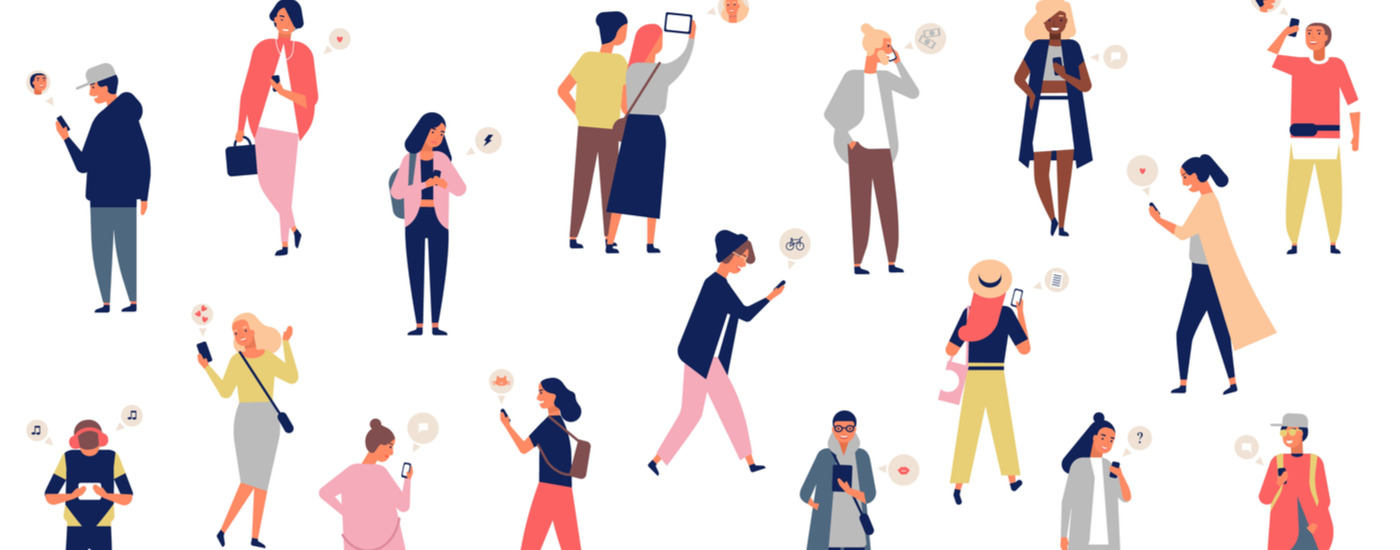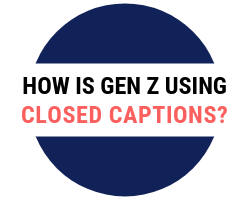Captioning Trends Make a Comeback Thanks to Gen Z
Updated: June 12, 2019
Generation Z: the newest generation to hit the spotlight. The members of Gen Z are young, so we don’t know much about them, but insights into the minds of this new generation arise frequently.
The question at hand today is, “How is Gen Z using closed captions?” In this post, we discuss the young people that Gen Z is composed of and how they’re shaping the future of closed captioning.
Who is Generation Z?
Depending on who you ask, Generation Z (Gen Z) is composed of people born between the mid-1990s to the mid-2000s. The young people of Gen Z are tech-savvy, multi-taskers that are ready to take on our evolving world with their self-directed and resourceful spirits.
There’s so much to learn about Gen Z, and we’re eager to know more about them: What are their habits? How do they spend their time? How will they shape our future?
The following traits only scratch the surface of what it means to be a Gen Zer:
Digital Natives
Gen Z grew up in a world with the internet at their fingertips. They could access information in moments and have all their questions answered at high speeds. Devices that were once thought of as the manifestation of science-fiction became common, essential items for Gen Z.
In general, new technology doesn’t phase this group, but they also have an awareness of past technology like landline phones and non-streaming media. For this reason, they aren’t afraid to use tried-and-true technology in a modern way.
Multitaskers
In this fast-paced world that we live in, it’s no surprise that Gen Zers have adapted to become great multitaskers. If you thought Millennials’ ability to juggle an average of three screens at a time was impressive, think again.
Gen Z uses an average of five screens at a time; that’s like using a laptop to finish homework, a tablet to video chat with a friend, a phone to text, a smartwatch to track steps, and the TV to watch a favorite Netflix original.
All at the same time.
This new generation can flip between texts, emails, phones calls, and social media like it’s nobody’s business.
Busy Bees
Gen Z doesn’t just live in a busy world; they participate, too. Their attention span averages at eight seconds, so they’re always on the lookout for something new, exciting, and engaging.
A whopping 92% of Gen Zers have a digital footprint. This group likes to keep with the times and absorb new information daily via the internet and social media. They continuously crave and receive updates via their digital devices.

Gen Z Loves Captions
The purpose of closed captions is shifting, or rather, expanding due to Gen Z’s ability to see beyond the original use-case for captions. Gen Zers, even those who aren’t deaf or hard of hearing, are using the closed caption feature when watching videos. But why?
A Medium article by Lance Ulanoff highlights that closed captions keep them from missing important information on their favorite shows while they finish up their homework and text a friend. Some experts even think that closed captions can improve viewing experiences for those with ADHD and auditory processing disorders.
It’s true: closed captions support the multitasking nature of Generation Z, but there’s more to it.
Captions Help Students
Because Gen Z was born anywhere from the mid-1990s to the mid-2000s, that means that a good portion of them are college-aged. Can closed captions help students achieve academic success?
To help answer that question, Oregon State University (OSU) in partnership with 3Play Media conducted a study across 15 institutions with a total of 2,839 student respondents. The study, titled “Student Uses and Perceptions of Closed Captions and Transcripts,” showed that closed captions are a useful tool for college students.
- More students said they use captions as a way to focus, to retain information, and to overcome poor quality in videos.
- 51.9% of students use captions for comprehension.
- 60.6% of Students with disabilities said captions were “very” or “extremely” helpful to their learning.
- 64.7% of students who “often” or “always” have trouble maintaining focus said captions were “very” or “extremely” helpful to their learning.
According to this study, it’s clear that focus, comprehension, and retaining information are three pain points for college students and using closed captions is a way to overcome those challenges.
Captions For Everyday
Closed captions help with focus and comprehension, and they aid students and those with learning disabilities. But what use do they hold for our everyday lives?
Students from the OSU study also indicated that they “use captions all the time, not just for their learning experience […] Captions with Netflix was mentioned multiple time, […] so we know that students are engaging with them outside of the classroom.”
The truth is, focus and comprehension aren’t just needed in a learning environment, they’re required every day. The notion that closed captions are only for deaf and hard of hearing individuals is a thing of the past, so make like Gen Z and turn on those closed captions!
The Future of Closed Captions
Closed captions at their core will always serve a greater purpose, and that is to make media and entertainment accessible to deaf and hard of hearing individuals and others with disabilities. Gen Z has the right idea for closed captions, though: expand their purpose and use.
With the open mind and the innovative attitude of Gen Z, who’s to say what’s next for captioning technology?

Further Reading

Subscribe to the Blog Digest
Sign up to receive our blog digest and other information on this topic. You can unsubscribe anytime.
By subscribing you agree to our privacy policy.










